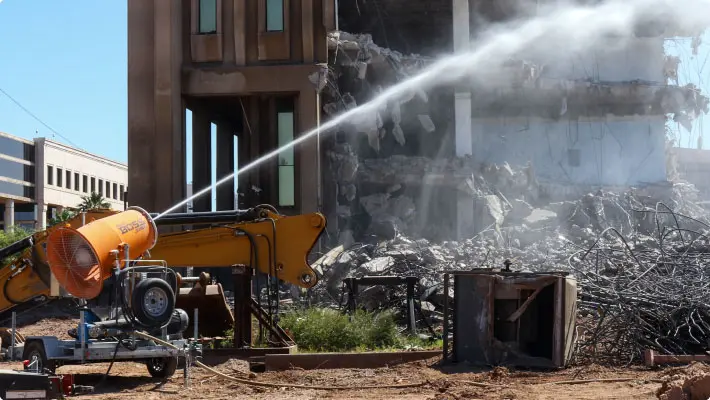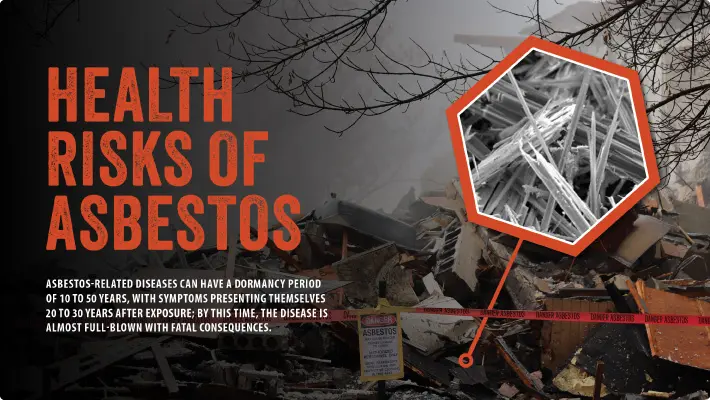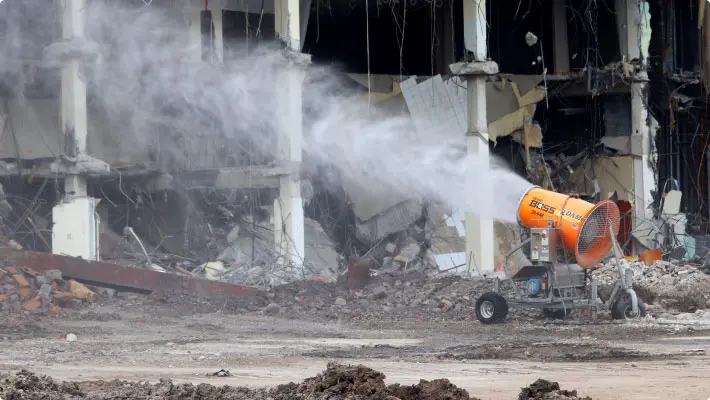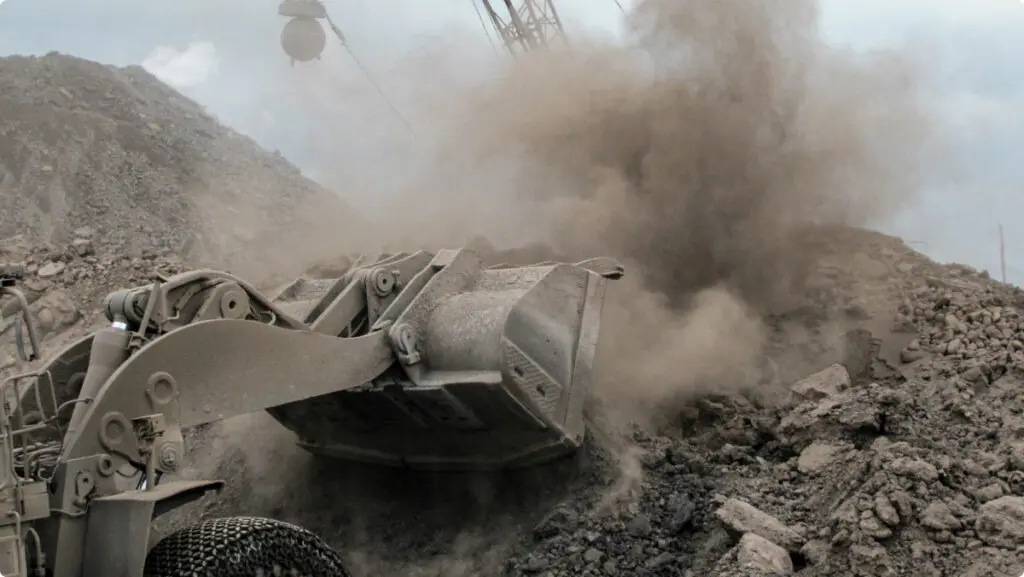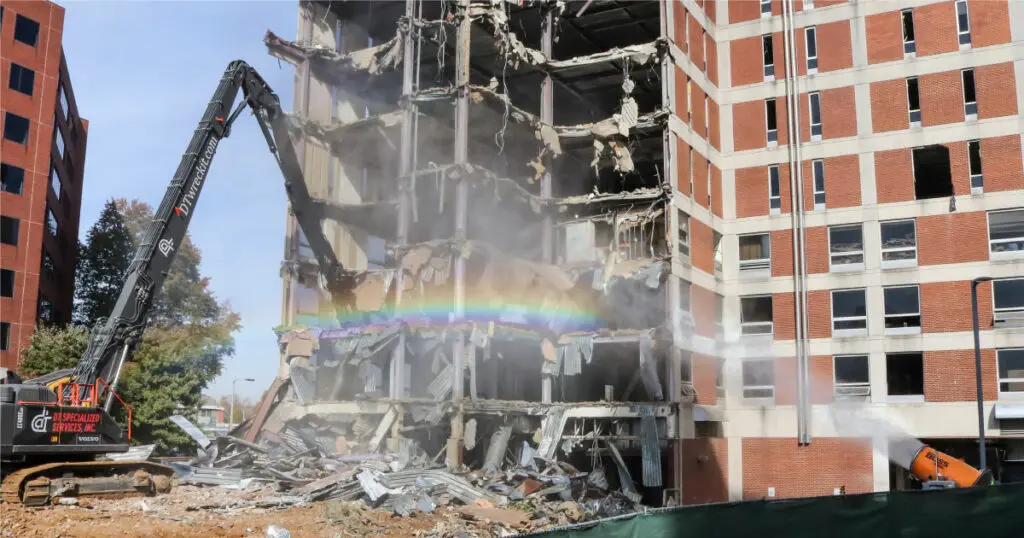AES Hawaii, Inc. has a reputation to uphold -- that as the cleanest power plant in the US state of Hawaii.
The company operates a coal-fired generator, an innovative and environmentally responsible facility that also burns such waste products as shredded tires, used motor oil, and spent carbon from water filters as supplemental fuels.
Opened in 1992, it’s the only electricity generator in the state with the technology, capacity, and permits to process all of these waste products in an environmentally-sound manner.
The AES facility employs a DustBoss DB-60 to control airborne particles, a powerful, water-fed design with a 25 HP fan motor that generates 30,000 CFM, for a throw of more than 200 feet.
AES can now blanket as much as 21,000 square feet of area (1,950 square meters) with a fine mist of water droplets that are atomized to 50-200 microns in size for maximum particle attraction and dust/odor control. With adjustable elevation from 0–50° and 40° of oscillation, the unit delivers outstanding coverage of the coal landing area.
“We’ve historically controlled the dust with sprinklers and hoses,” said Area Supervisor Mike Savidge. “But we wanted to improve the effectiveness of our suppression efforts and those methods required too many manhours each week. We decided to rent the DB-60 as part of the trial program,” he said. “We were so pleased with the results that we have since purchased the machine.”
Savidge said that in addition to the environmental and workplace safety benefits of preventing airborne coal dust from migrating, he anticipates longer air filter life on heavy equipment.
He estimated that AES has put about 3,000 hours on the dust suppression system so far, running it primarily in the mornings and as needed when moving material.
The misting cannon for dust suppression
“We’ve historically controlled the dust with sprinklers and hoses.
But we wanted to improve the effectiveness of our suppression efforts and those methods required too many manhours each week."
- Mike Savidge
Area Supervisor
The oscillating ducted fan design of the DB-60 features 30 nozzles, specially developed to atomize droplets to the optimum size for dust capture. Airborne water droplets and dust particles attract more readily when they’re about the same size. We atomize the water to 50–200 microns, which gives us the maximum attraction.
The DB-60 also incorporates a 10 HP booster pump for increasing water pressure by as much as 150 psi. At a total boosted pressure of 200 psi, the machine uses about 20-30 gpm.
Fed by a 1-1/2" quick-disconnect hose, the unit requires just 10 psi of constant pressure. It can be outfitted for potable or non-potable water sources.
One of the world's cleanest coal-fired operations
AES Hawaii produces and sells 180 megawatts of electricity to the local utility (Hawaiian Electric Company), an amount that typically represents about 15 percent of Oahu’s current needs. In addition to its electrical output, the plant supplies 30,000 pounds of steam per hour to a nearby oil refinery in the island’s Campbell Industrial Park.
The site uses state-of-the-art Circulating Fluidized Bed (CFB) technology that allows the plant to rank as one of the cleanest coal-fired operations in the world.
The company also employs post-combustion techniques to further reduce pollutant levels well below EPA standards. The emission of criteria air pollutants from the CFB coal-fired facility is far under the limits set by applicable Ambient Air Quality Standards and lowest of all the major generating plants on Oahu.
To achieve its goal of providing safe, clean, and reliable electricity to the people of Oahu, AES introduces limestone into the coal combustion process, capturing harmful sulfur dioxide in the early stages so it comes out of the process with ash to reduce air pollution.
Most coal plants use industrial scrubbers to remove harmful pollutants later in the combustion process, which is far less efficient. The AES operation has proven so reliable that the site’s 15-year lifetime availability currently stands at about 97 percent, compared to an industry average around 88 percent.
AES Hawaii is one of the two largest beneficial users of waste products on the island, second only to the City of Honolulu’s H-Power Plant, which is fueled by trash.
A portion of the AES ash is recycled, as it becomes an ingredient in concrete used on the island. The balance of the ash is beneficially used as a fire break between landfill cells and as a protective layer on the synthetic liner of a landfill.
CUSTOMER
AES Hawaii, Inc.
LOCATION
Kapolei, HI (US)
CHALLENGE
Find a way to reduce airborne dust during storage, unloading, and transportation of coal used for electric power generation at the only coal-fired generator on the island of Oahu. The state's cleanest power plant was looking for an innovative solution that would be more effective than traditional manual spraying, yet would reduce the amount of manpower needed.
SOLUTION
The DustBoss DB-60, a ducted fan design that was developed specifically for high efficiency over a large coverage area. The portable oscillating unit atomizes water droplets to the optimum size for superior particle attraction and dust/odor control.
RESULTS
The DB-60 controls airborne particulates with a powerful, water-fed design featuring a 25 HP fan that delivers a range of more than 200 feet. AES can now blanket as much as 21,000 square feet of area (1,950 square meters) with a fine mist of water droplets that are atomized to 50–200 microns in size for maximum particle attraction and dust control. The oscillating unit delivers outstanding coverage of the AES coal loading area.
AES HAWAII, INC. is a subsidiary of the AES Corporation, one of the world's largest global power companies. With operations in 28 countries on five continents, AES generation and distribution facilities have the capacity to serve an estimated 100 million people utilities amass annual sales of over worldwide. The firm’s 13 regulated 78,000 GWh, and its 121 power facilities have the capacity to generate approximately 43,000 megawatts through the efforts of a global workforce totaling 28,000 people.
AES Hawaii, Inc. has a reputation to uphold -- that as the cleanest power plant in the US state of Hawaii.
The company operates a coal-fired generator, an innovative and environmentally responsible facility that also burns such waste products as shredded tires, used motor oil, and spent carbon from water filters as supplemental fuels.
Opened in 1992, it’s the only electricity generator in the state with the technology, capacity, and permits to process all of these waste products in an environmentally-sound manner.
The AES facility employs a DustBoss DB-60 to control airborne particles, a powerful, water-fed design with a 25 HP fan motor that generates 30,000 CFM, for a throw of more than 200 feet.
AES can now blanket as much as 21,000 square feet of area (1,950 square meters) with a fine mist of water droplets that are atomized to 50-200 microns in size for maximum particle attraction and dust/odor control. With adjustable elevation from 0–50° and 40° of oscillation, the unit delivers outstanding coverage of the coal landing area.
“We’ve historically controlled the dust with sprinklers and hoses,” said Area Supervisor Mike Savidge. “But we wanted to improve the effectiveness of our suppression efforts and those methods required too many manhours each week. We decided to rent the DB-60 as part of the trial program,” he said. “We were so pleased with the results that we have since purchased the machine.”
Savidge said that in addition to the environmental and workplace safety benefits of preventing airborne coal dust from migrating, he anticipates longer air filter life on heavy equipment.
He estimated that AES has put about 3,000 hours on the dust suppression system so far, running it primarily in the mornings and as needed when moving material.
The misting cannon for dust suppression
“We’ve historically controlled the dust with sprinklers and hoses.
But we wanted to improve the effectiveness of our suppression efforts and those methods required too many manhours each week."
- Mike Savidge
Area Supervisor
The oscillating ducted fan design of the DB-60 features 30 nozzles, specially developed to atomize droplets to the optimum size for dust capture. Airborne water droplets and dust particles attract more readily when they’re about the same size. We atomize the water to 50–200 microns, which gives us the maximum attraction.
The DB-60 also incorporates a 10 HP booster pump for increasing water pressure by as much as 150 psi. At a total boosted pressure of 200 psi, the machine uses about 20-30 gpm.
Fed by a 1-1/2" quick-disconnect hose, the unit requires just 10 psi of constant pressure. It can be outfitted for potable or non-potable water sources.
One of the world's cleanest coal-fired operations
AES Hawaii produces and sells 180 megawatts of electricity to the local utility (Hawaiian Electric Company), an amount that typically represents about 15 percent of Oahu’s current needs. In addition to its electrical output, the plant supplies 30,000 pounds of steam per hour to a nearby oil refinery in the island’s Campbell Industrial Park.
The site uses state-of-the-art Circulating Fluidized Bed (CFB) technology that allows the plant to rank as one of the cleanest coal-fired operations in the world.
The company also employs post-combustion techniques to further reduce pollutant levels well below EPA standards. The emission of criteria air pollutants from the CFB coal-fired facility is far under the limits set by applicable Ambient Air Quality Standards and lowest of all the major generating plants on Oahu.
To achieve its goal of providing safe, clean, and reliable electricity to the people of Oahu, AES introduces limestone into the coal combustion process, capturing harmful sulfur dioxide in the early stages so it comes out of the process with ash to reduce air pollution.
Most coal plants use industrial scrubbers to remove harmful pollutants later in the combustion process, which is far less efficient. The AES operation has proven so reliable that the site’s 15-year lifetime availability currently stands at about 97 percent, compared to an industry average around 88 percent.
AES Hawaii is one of the two largest beneficial users of waste products on the island, second only to the City of Honolulu’s H-Power Plant, which is fueled by trash.
A portion of the AES ash is recycled, as it becomes an ingredient in concrete used on the island. The balance of the ash is beneficially used as a fire break between landfill cells and as a protective layer on the synthetic liner of a landfill.
Implement Dust Control at Your Jobsite!
Receive a FREE quote and talk to a dust control specialist today to stop fugitive dust!
Get A Quote
More on BossTek
Subscribe and Stay Up-to-Date!
Receive a monthly newsletter keeping you up-to-date on the latest in dust and odor control.
Subscribe


